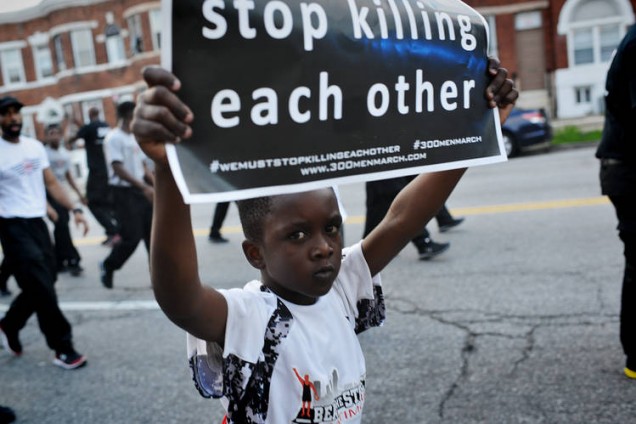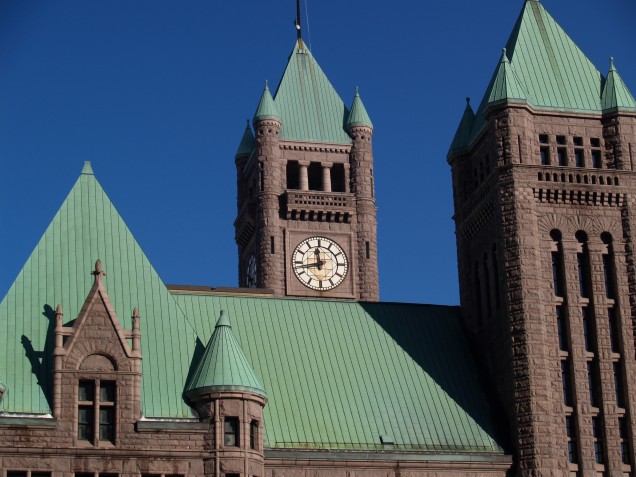Up In Smoke (and Vapor): Hawai’i Raises Minimum Smoking Age and Regulates E-Cigarettes
On January 1, 2016, Hawai’i became the first state in the nation to increase smoking age restrictions to 21 years old. Under Act 122, Hawai’i prohibits the “sale, purchase, possession or consumption of cigarettes, other tobacco products, and electronic smoking devices (or e-cigarettes) to anyone under age 21.” Before Hawai’i, only municipalities such as New York City and Needham, Massachusetts restricted tobacco sales to individuals under 21 years old. States however, remain more conservative, with Alabama, Alaska, New Jersey, and Utah increasing the minimum age to buy tobacco to 19 years old. The Hawai’i law began a wave of amendments to state tobacco laws. As of July 14th, 13 states (including Hawai’i) raised their minimum legal sale age to 21 years old, as have 170 different municipalities across the nation. Although raising the minimum age to purchase tobacco is a momentous step, there is another important feature of the Hawai’ian law that some other states also adopted in their bill language. The bill restricts sales and uses of electronic smoking devices, commonly referred to as “e-cigarettes.”
In the tobacco restriction movement, proponents for increased age minimum laws argue that a majority of smokers become addicted to cigarettes before their 21st birthdays. According to New York City Health Commissioner Thomas Farley, restricting laws deter young people from smoking all together because the laws make it difficult for the adolescent to access nicotine. Farley asserts, “an 18-year old can buy [cigarettes] for a 16-year-old.” A high school sophomore can go down the hall of his high school and ask an 18-year-old peer to buy him, or bum him, cigarettes. With the age minimum at 21 years old, that high school sophomore would “have to find someone in college or out in the workforce” in order to obtain cigarettes. This obstacle of significantly decreased accessibility to of-age-buyers makes cigarettes less obtainable for high school students.
The August 26, 2013 issue of Annals of Internal Medicine included a hypothetical health policy model that increased the minimum age for tobacco sales to 21 years old. The model projected that youth smoking rates could drop from 22% to less than 9% amongst 15 through 17-year-olds in seven years with the right legislative initiative. The Hawai’i Department of Health and University of Hawai’i both offered testimony to the Legislature in support of the bill as a strategy to reduce youth tobacco use and help current users quit. Further, the U.S. Army and Navy announced that they will comply with the new Hawai’ian law.
Likewise with non-electronic tobacco products, there is evidence that adolescents may benefit from e-cigarettes restriction and regulation. According to the Hawai’i law’s text, 9th and 10th grade students at 6 Hawai’i high schools were subject to a state study. During that study, researchers found 29% of the students used electronic smoking devices at least once and 18% used electric smoking devices regularly. These numbers were “considerably higher” than rates in other areas in the United States. The bill further states that adolescents consider electric smoking devices as less harmful to health than conventional cigarettes. Still, the Hawai’i Legislature highlighted that electronic smoking devices contain highly addictive nicotine. Through this law, the Legislature hoped to keep their young adults away from electronic smoking devices until there is enough research to prove that these devices are in fact safe for adolescents.
A study posted by the Center for Disease Control and Prevention (CDC) found increases of U.S. adults who have both tried and consistently use e-cigarettes. Further, the population’s knowledge about e-cigarettes jumped from 40.9% in 2010 to 79.7% in 2013 due to millions of dollars spent on e-cigarette marketing. Whereas e-cigarettes are heavily marketed on television, non-electronic cigarettes are marketed at all on television due to a 1970s law that banned cigarette advertising from television.
The National Youth Tobacco Survey of 2014 concluded that e-cigarette use is growing fast amongst America’s youth, and the New York Times reported that, “e-cigarettes have arrived in the life of the American Teenager.” The number of high school students who use electronic smoking devices are on the rise, while the use of conventional cigarettes declined. Interviews with teenagers reveal that e-cigarettes have become almost as common at school as laptops. Some high school students report that they smoke e-cigarettes to fit in with the trend and because they like the taste. With candy flavors such as “Sweet Tart” and “Unicorn Puke” (described as the taste of every color skittle at once), the electronic smoking device industry seems to be targeting adolescents and teens specifically.
One advantage of e-cigarettes may be the unprecedented decrease in conventional cigarette use by high school students. Between 2013 and 2014, the number of conventional cigarette smoking teens decreased by 25%, the fastest pace in years. Given the damage non-electronic cigaretts can cause, some may interpret this statistic as a positive trend. Nevertheless, there is growing evidence that dependence on electronic smoking devices may also be harmful to the human body. As the number of e-cigarette users increases, the number of calls to poison centers regarding e-cigarette liquids exposure rises as well. In 2010, poison control centers received one call per month regarding electronic smoke device liquids. In 2014, that number sprung to 215 calls per month. CDC Director Tom Friedman said, “use of these products is skyrocketing and these poisonings will continue.” Calls to poison centers regarding electronic smoking devices were more likely than conventional cigarettes to cause adverse health effects following exposure.
The U.S. Food and Drug Administration (FDA) does not have regulatory authority over recreational electronic smoking devices. Still, the FDA lists the reported adverse events involving electronic smoking devices on its webpage. These illnesses include: pneumonia, congestive heart failure, disorientation, seizure, hypotension, and other health problems. In 2014, the FDA proposed a “deeming rule” which would regulate e-cigarettes as tobacco products. This proposal has not yet been approved. Nevertheless, a survey shows that 57% of those asked believe that the U.S. Food and Drug Administration should regulate e-cigarettes just as it regulates tobacco.
Hawai’i’s law requires a $10 fine for individuals under 21-years-old who are found in possession of cigarettes or electronic smoking devices, or who are caught buying such contraband. Subsequent offences subject violators to $50 fines. If the repeat violator is unemployed and not in school, a punishment of 48 to 72 hours of community service hours may be issued in place of monetary fines. Individuals caught selling tobacco or electronic smoking devices to a person under 21-years-old shall be fined $500 for the first offense and between $500 and $2,000 for subsequent offences. In California, only people over 21 may purchase e-cigarettes and they are now banned wherever traditional cigarettes are forbidden. In addition, California anti-tobacco groups are seeking a dramatic increase in taxes from $0.87 to $2.00 per pack.
Although these new laws garnered some criticism, many groups, including the Coalition for a Tobacco-Free Hawaii, are excited about the changes. The health results and smoking rates in Hawai’i and the other 13 states could lead to nation wide reform.
 Lillian Feinberg is from Leominster Massachusetts and graduated cum laude from The George Washington University. She majored in English literature with minors in health and journalism. Lillian is expected to graduate from Boston University with a Juris Doctor in spring 2017. With interests in legislation, policy, energy law, and health law, Lillian looks forward to moving to Washington D.C. after graduation to pursue her policy interests.
Lillian Feinberg is from Leominster Massachusetts and graduated cum laude from The George Washington University. She majored in English literature with minors in health and journalism. Lillian is expected to graduate from Boston University with a Juris Doctor in spring 2017. With interests in legislation, policy, energy law, and health law, Lillian looks forward to moving to Washington D.C. after graduation to pursue her policy interests.
New York Legislature (Re)Considers “Death with Dignity”
The New York legislature have become the latest lawmakers to consider whether terminally ill patients have a right to end their own lives with lethal medications prescribed by doctors. The bill, titled the New York End-of-Life Options Act, states that its goal is to make “aid in dying an open, legitimate option for terminally ill individuals.” As science and technology have converged to allow human lives to be prolonged well beyond the point at which biology alone would have ceased their existence, society has been forced to consider whether human beings have a right to die. Both courts and legislatures across the country have been forced to confront this arguably unanswerable question, with differing results. In 1997, the Supreme Court famously upheld a Washington prohibition against physician-assisted suicide, with Chief Justice Rehnquist writing, “Whether acting from compassion or under some other influence, a physician who would provide a drug for a patient to administer might well go the further step of administering the drug himself; so, the barrier between assisted suicide and euthanasia could become porous, and the line between voluntary and involuntary euthanasia as well.” Though the question is not a new one, it continues to prove just as controversial as ever.
The New York bill would allow mentally competent patients with terminal illnesses—defined as diagnosed, incurable, and irreversible diseases that will result in death within six months—to receive a prescription for “aid-in-dying” medication. It establishes a strict procedural framework through which the medication must be obtained. The patient must submit a formal, written, and voluntary request, witnessed by two separate individuals; two physicians must certify that the patient is suffering from a terminal illness and is competent and fully informed; the physicians may choose to refer the patient to a mental health professional if they suspect impaired judgment; and the patient will have the right to rescind the request at any time, no matter the patient’s mental state. It provides safeguards against coercion—for example, one of the witnesses to the patient’s request must not be related to or have a financial interest in the patient’s death—and establishes felony penalties for coercing or forging a request. Participation in this program would be entirely voluntary for physicians. These strict procedures are typical of legislation of this sort. For example, New Jersey established similarly strict guidelines by which to evaluate an incompetent patient’s right to die in In re Conroy.
The New York End-of-Life Options Act was first introduced in 2015, but has received renewed attention this year, particularly after the husband of Brittany Maynard lobbied lawmakers in Albany on February 25. Ms. Maynard made headlines in 2014 when, after being diagnosed with a terminal brain tumor, she moved from California to Oregon to legally end her life under the latter’s Death with Dignity law. Since Ms. Maynard’s death, her husband, Dan Diaz, has been spearheading a movement across the country to encourage lawmakers to pass death with dignity bills. Working with the right to die advocacy group Compassion and Choices, their push has seen twenty-seven states consider aid-in-dying bills in 2015 alone.
Shortly after the bill was first introduced, it’s main sponsor, Sen. Diane Savino, met with Dan Diaz in New York. She said at the time, “The option to end one’s suffering when facing the final stages of a terminal illness should be a basic human right, and not dependent upon one’s zip code.” Assembly Health Committee Chairman Richard Gottfried recently echoed this sentiment, saying that there is no cogent distinction between the choice to end life-sustaining treatment (a right that has been recognized in New York for many years) and the choice to take medication that will hasten and ease death.
Such a view, however, is far from universally accepted. The question of whether terminal patients have a right to aid in dying has been hotly contested. The bill’s opponents, and opponents of such a right in general, cite fears that this legislation could allow patients, particularly the elderly or otherwise at-risk patients, to be coerced into choosing death. Opponents are also concerned about misdiagnosis of terminal illnesses and the role of patient depression. Kathleen M. Gallagher, director of pro-life activities for the New York State Catholic Conference, cites a moral distinction between allowing death to take its course and hastening it through lethal medication. Ms. Gallagher also named fears that legalizing assisted suicide would indelibly alter the “physician’s role as healer” and lead to decisions about death focus on the most “financially expedient option.”
Because these issues take so long to be decided by legislatures, and time is not always a given for terminally patients, they often turn to the courts in search of a swifter resolution. Indeed, advocates of the right to die took the issue to court in New York in 2015, but to no avail. The plaintiffs, including doctors and terminally ill patients, argued that physician-assisted suicide does not fall under New York’s prohibition on causing or aiding another to commit suicide. In a slip opinion, Judge Joan Kennedy granted the defendants’ motion to dismiss, finding that the lawsuit was indistinguishable from Vacco v. Quill. In Vacco, a group of physicians and terminally ill patients argued that New York’s ban on physician-assisted suicide violated the 14th Amendment’s Equal Protection Clause by allowing competent terminally ill patients to withdraw their own treatment, but denying the same right to those who needed a physician to do so for them. The U.S. Supreme Court, however, ruled that the state’s prohibition was constitutional because of the state’s interest in promoting medical ethics, protecting the disabled and the terminally ill from coercion, and protecting human life generally.
The bill’s supporters hope that the legislature will act to allow New York’s terminally ill to have access to aid in dying. However, Senate President John Flanagan told reporters that his “visceral reaction” is against the bill because of its literal “life and death” implications. Given his sentiment, and the general reticence of the legislature to address this issue, Senate Minority Leader Andrea Stewart-Cousins cautions that the bill likely will not pass during the current legislative session. Indeed, it has been sitting in committee since February 13th. Even if this is true, however, the rate at which legislatures around the country have been discussing the right to physician-assisted suicide suggests that this bill will not be forgotten any time soon.
Rebecca Beyer
Bees are Dying …. Massachusetts Should Pass Pesticide Restrictions
We need honeybees, desperately. Unfortunately, bees are dying at an unsustainable rate; without them, our agricultural system would collapse. Bees pollinize about one third of the food we eat, and about 85% of the world’s crops. Without bees, many essential crops would die out, creating a crisis. In Massachusetts, we rely on bees to pollinate crops on almost half of our farmland. Pesticides are one factor causing the decline in bees; over the last decade, an average of 30% of bee colonies die every winter in the United States. Bees are also dying in the wild.
In this article I will briefly give an introduction on neonicotinoids (popularly called “neonics”) a specific type of pesticide. I will then explain the current regulations on pesticides in Massachusetts, and summarize the proposed legislation directed at neonics. Finally, I will outline similar legislation in other states. Based on the evidence, the Legislature should take action and enact House Bill 655.
Most pesticides are capable of killing bees, however one type- neonics- is particularly lethal. These pesticides became popular because they are safer for people and animals than other pesticides. Neonics are also particularly effective as a pesticide, because they target specific types of insects and move throughout entire plants’ vascular systems, distributing the chemical to all parts of the plant, including the nectar and pollen. Bees can ingest the pesticide in a number of ways. Once neonics are applied to the seeds, the ground, or the leaves of the crop, bees may ingest the pesticide by drinking nectar, transferring pollen, or by flying through clouds of the pesticide (a result of spraying neonics on the ground or leaves. The pesticide causes the bees to become disoriented. They leave their hives and are not able to return, causing them to die without the support of the hive.
One way to reduce bee mortality is reduction of the use of neonics on crops. Italy banned the use of the pesticide on corn crops in 2008. Researchers found that crop yields did not decrease as a result of stopping the pesticide use. In a study in Ontario, farmers reported that the use of pesticides only minimally increased crop yields, and that they could have better success increasing yields by improving irrigation techniques and improving the quality of their soil. However, the agro-chemical industry claims that banning neonics would cause agriculture to suffer and result in crop failure.
The decline of bees poses problems not only for agriculture, but also to the beekeepers that care for them. During the 2014-2015 growing seasons, American beekeepers lost an average of 42% of their colonies. Massachusetts beekeepers lost 46.4% of their colonies from 2014 to 2015.
Beekeepers cannot bring their bees to pollinate on land where the farmers heavily spray neonics without risking losing the majority of their colonies. Further, because the neonics absorb into pollen, the dangerous effects travel beyond the plants that were initially treated. Thus, beekeepers are being seriously limited as to where they can pollinate their bees without threatening their livelihood.
Current Regulations in Massachusetts
Massachusetts regulates pesticides under the Massachusetts Pesticide Control Act (MPCA, M.G.L. 132B). The MPCA defines pesticides as “a substance or mixture of substances intended for preventing, destroying, repelling, or mitigating any pest, and any substance or mixture of substances intended for use as a plant regulator, defoliant or desiccant (M.G.L. 132B §2). In its current form, the MPCA does not specifically regulate neonicotinoids separately from other types of pesticides.
The MPCA does not limit pesticide use during the blooming season in any way. The MPCA does, however, state that the Department of Food and Agriculture shall promote alternate pest control methods, such as integrated pest management and sustainable agriculture.
Proposed Regulations
There is currently a bill in Massachusetts that would impose a partial ban on neonics. The bill is currently in the Environment, Natural Resources and Agriculture Committee and would limit the use of neonics to use by certified applicators. During the blooming season, the bill would prohibit consumer (non commercial) use. Outside of the blooming season, neonics can be used for both commercial and non-commercial purposes, but only if applied by a certified applicator.
The bill would require commercial applicators to provide landowners with lists of alternative, less harmful pesticides, and require the applicators to inform landowners of the risks involved with using the pesticide. The bill would further require landowners to acknowledge that they understand the risks involved. Finally, the bill would require that certified commercial applicators complete training programs on the risks of neonics and the proper application techniques to reduce those risks.
Similar Regulations in Other States and Countries
In April 2016, Maryland became the first state to impose major restrictions on neonics use, with a partial ban taking effect in January 2018. Maryland’s act allows farmers to apply the pesticide to their crops, but will ban regular consumers from purchasing the pesticide for home use.
Oregon also regulating neonics, but only bans neonic use on one genus of tree. Eugene, Oregon has taken the ban one step further and banned neonics use on city owned land. Seattle has also banned the pesticide on city owned land.
Outside of the United States, Italy implemented a partial ban on neonic application to seeds and the ground in 2008. Five years after the ban was initiated, researchers noticed a significant improvement in the quantity of bees and colonies. However, the researchers noticed that bee mortality rates remained high in areas where plants’ leaves (as opposed to their seeds or the ground) are treated by the pesticide. In 2013 the EU implemented a temporary restriction on the use of neonics by prohibiting their use on crops “attractive to bees”. Additionally, France is moving toward a total ban on pesticides that can harm bees.
Areas of Concern
Farmers are hesitant about heavy regulations on neonics because they fear reduction in crop yields and increased costs. They’re right to fear increased costs- when the UK banned neonics on rapeseed crops, farmers faced an additional $33 million in costs for alternative pesticide use, replanting, and lost crops. Unlike the ban in the UK, House Bill 655 would not prohibit commercial farmers from using the pesticide on their crops.
The Massachusetts Legislature should pass H. 655—although the bill does not outright ban the use of neonics, any new regulation is a step in the right direction. If crop growers are educated on the harmful effects to bees from the pesticides they are applying, they may opt for alternative methods. Further, restricting the use of neonics to commercial use will eliminate their use by individuals, protecting bees in the wild (as opposed to bees managed by beekeepers). So far, no states in the United States have totally banned the use of neonics, and Massachusetts is unlikely to be the first. However, by limiting the use of the pesticide, and giving its effects a hard look, we may pave the way for more pollinator friendly legislation.
Talia Quartetti
Can Mandatory Liability Insurance Stem Police Brutality? By: Phil Schneider
The deaths of Michael Brown in Ferguson, Missouri and Freddie Grey in Baltimore has placed a spotlight on the problems of police brutality and misconduct. Responding to those deaths and other examples of police abuses, large scale protests, some of which have turned violent, and the Black Lives Matter movement have become prominent parts of a national discourse. Now the shootings of Philandro Castile in Minnesota and Alton Sterling in Louisiana, as well as the shootings of police officers in Dallas and Baton Rouge have made addressing the issue of police misconduct all the more urgent. An innovative idea being proposed to Minneapolis voters may be part of the solution.
In addition to the individual loss of life and suffering caused by police misconduct, there has been a larger societal cost. In 2015, after several years of decline, the murder rate rose 17% in the largest 56 cities in the country. Professor Richard Rosenfeld, writing for the National Institute of Justice, recently argued that community distrust of the police has made it impossible for police officers to do their jobs. Citizens often view the police less as partners in the community and more as invading armies, especially in minority majority inner cities. People in such communities have no faith in the police protecting them, and thus are much less likely to provide the assistance needed to close cases.
Several different policy approaches have been suggested to help improve these poor police / community relations including: bias training, increased data collection and body cameras. Each of these have been tested in different jurisdictions.
After the November 2015 police shooting of Jamar Clark, however, activists in Minnesota proposed a different approach; a ballot question that would require all police officers to purchase professional liability insurance, similar to the malpractice insurance carried by doctors. The base rate would be paid by the city, but the individual officers would be responsible for any additional rate raises due to personal or claims history. The hope is that this would price out police officers with multiple offenses, using market forces to remove uncontrollable police officers with multiple offences and encourage other officers to mitigate their behavior. Supporters of the law have pointed to cases like Officer Tyrone Barze Jr., who has been the subject of seven separate lawsuits and has cost the city over $300,000 dollars in settlements. Under a system of liability insurance, officers like Barze would be priced out of a job.
The proposal also hopes to shift some of the financial burden of civil rights settlements away from the taxpayers. In 1961 the Supreme Court ruled in Monroe v. Pape that police officers can be individually liable for civil rights violations. However primarily through pressure from police unions, individual liability for police officers vanished. Civil service unions are required to defend all of their members, even those who demonstrate bad conduct. In addition municipalities have incentives to quickly settle lawsuits rather then risk large jury settlement. Those two forces have combined to create a system where brutal and corrupt police officers are protected from disciplinary action and can continue to serve even after a pattern of malfeasance is established. From 2006 to 2011 the 44 largest jurisdictions paid out approximately $735 million in civil rights claims, police officers personally paid less the .02% of that money. Current Minnesota state law requires municipalities to cover payouts in cases where the harm was purely accidental and the police officer was acting within their duties. For cases where the officer was negligent or criminal the current ballot amendment would shift much of cost of settlements onto insurance companies.
Police groups and crime researchers have expressed several objections to the Minneapolis proposal, calling it “simplistic.” They argue that liability insurance would warp incentives for police officers. Officers may be unwilling to take the aggressive actions that are required for their jobs. The system would encourage officers to sit in their patrol cars, which would slow response time and hinder preventative policing. In addition the amendment brings up issues of due process. Insurance companies operate by manipulating and limiting risk. With mandated liability insurance, officers could have their rates increase even if they are found not legally responsible. In addition insurance companies would have a strong incentive to quickly settle cases and force higher rates on the officers accused. Insurance companies are profit-making institutions, and there is legitimate concern about offloading judicial decisions on companies whose prime goal is making money. Whether police officers keep their jobs could be made not by courts or oversight boards, but by actuary tables.
Despite these real drawbacks, the Minneapolis ballot initiative is an interesting test case. Federalism allows states and municipalities to experiment with out of the box solutions. The problems of police brutality and the related lack of community involvement and trust have created a dangerous situation in many of America’s cities. The impact of requiring liability insurance is still unknown, but this problem is so serious that unique approaches are worth trying. On July 13, 2016, the Minneapolis City Council approved putting the measure on the ballot. Hopefully, this will be a test case to help alleviate one of the most serious problems our cities face.
By: Phil Schneider <phil@list.org>







